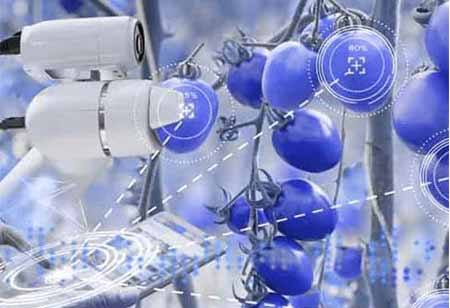Thank you for Subscribing to Agri Business Review Weekly Brief
What are the benefits of precision mapping for agribusinesses?
Agricultural field mapping is essential to precision farming.

By
Agri Business Review | Monday, May 16, 2022
Stay ahead of the industry with exclusive feature stories on the top companies, expert insights and the latest news delivered straight to your inbox. Subscribe today.
Agribusinesses should depend on different types of accurate maps to focus on critical land characteristics on a large scale.
FREMONT, CA: Agricultural field mapping is essential to precision farming. Mapping technologies help farmers find the exact locations of all crops on their farms and navigate the area. They also can show location data on any crops. Aside from knowing the exact locations of crops, growers and agribusinesses can get a ton of valuable information about soil, product origins, moisture, and nutrient levels.
How does precision mapping solve agribusiness challenges?
Agribusiness leaders must accurately distinguish between different fields and manage them appropriately, improve efficiency and productivity, decrease maintenance and operational costs, and increase profitability by shifting from seasonal revenue to sustainable and predictable business growth. To attain these goals, agribusinesses adopt various precision farming technologies.
Technologies adopted for precision farming
Precision mapping takes the first position among these technologies. It unites telematics data from sensors with images from satellites and drones, matching them with maps to support agribusinesses attain their goals within the location context. Proven outcomes are expected to drive even greater adoption of mapping technologies in the future.
Use of various precision mapping techniques in 2018 and 2025 (predicted)
Precision agriculture mapping works with different physical sensors, leveraging applications powered by the Internet of Things in the agriculture industry. Sensors offer data on crops and soil moisture, irrigation, and yields. GPS & GIS (geographic information system) apps report the exact location of each sensor, while data platforms mix all input data into usable maps for end users.
GIS in agriculture helps agribusinesses improve costs, provides deep insights, display the exact distance to agricultural facilities, and guides agribusiness owners to better plan the supply chain network for crop transportation.
What types of maps can agribusinesses use?
Agribusinesses should depend on different types of accurate maps to keep an eye on critical land characteristics on a large scale.
Soil zone maps
Farmers require soil zoning to see what’s happening at the soil surface to be conscious of damaging irrigation and other soil issues that could damage their long-term production strategy. Agriculture mapping service providers can collect soil zone maps by dividing fields into grids according to soil samples collected from individual grid blocks. The more samples you gather, the more grid blocks you’ll have for greater precision on soil zone maps.
GIS and GPS maps
GIS & GPS maps for farmers are a goldmine of dependable data on crop harvesting status, health, soil moisture, and the quantity and quality of resources. Agribusinesses can employ GIS tools and web analytics platforms to forecast crop growth and agricultural production. Geoinformatics in agriculture strongly depends on custom GIS software solutions or commercial products by global providers, like Google Earth Pro.
Satellite and drone imagery
Satellite and drone images work perfectly together. For instance, farmers may rely on satellite data to prepare fields for heavy rain by predicting weather changes in advance, avoiding the leaching of nutrients and seeds. They can also equate satellite images before and after rain to trail drainage and find crops broken by the weather.
As for drones, images taken below altitude are not clouded by clouds, as often occurs with satellite observations. Agribusinesses may employ fleets of drones, flying them across fields to gather precise images of damaged crops, investigate crop requirements and homogeneity, or spray herbicides with a smart spraying technology in agriculture.
Crop yield maps
Agribusinesses can use satellite images and GIS data to assess vegetation and crop yields. They can distinguish between soils and dense canopies to smartly manage crops in different seasons and identify yield-limiting factors. These precision agriculture maps are a visual tool to recognize correlations between crop yields and field condition indicators.
Green vegetation indices (NDVI maps)
Normalized Difference Vegetation Index(NDVI) maps enable agribusinesses with the most accurate and complete measurements of the quantity of vegetation in their fields, define moisture levels, and qualify soil health. These maps can display environmental, social, physical, and other factors affecting crop growth.
NDVI maps are important for AgTech predictive software tools that determine where to take soil samples and what areas to pick to expand fields. These maps are the most significant factor in growing agribusiness revenue and avoiding many potential problems with flooding and dry soils.
How can you compile the most accurate maps?
Farmers and agricultural companies should understand that they require more than just one map to monitor all critical factors for their business. They should combine various technologies, tools, equipment, maps, and data. These comprise physical sensors installed on machinery and directly in the soil, GIS and GPS data, and images from satellites and drones.
Real-life utilization of precision maps in agriculture and the benefits they bring
By applying fresh precision agriculture technologies, farmers may enhance the productivity of their land. Most of these technologies employ different data gathered on crops and fields.
Precision mapping enhanced with geo-referenced data tells farmers where and when they should sow seeds, how much water and nutrients to employ, and what fields are ready for harvesting. These geodata can be used for various applications and data management platforms, analytics and prediction, guidance systems, and monitoring.





